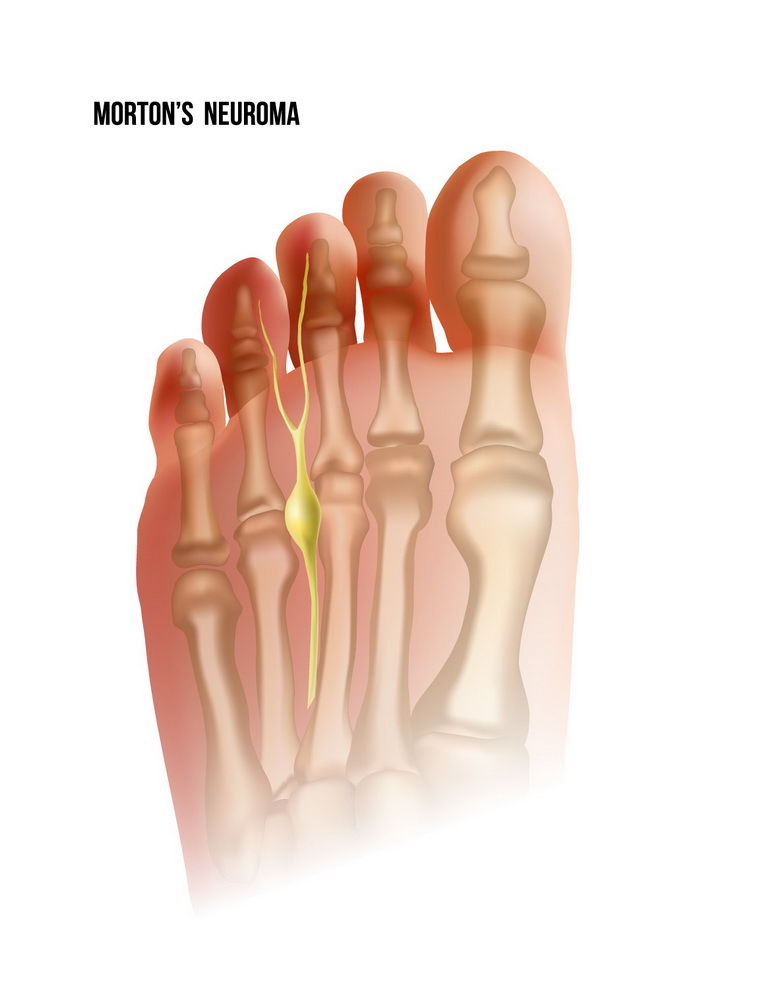Mortons NeuromaMorton’s Neuroma / Intermetatarsal Neuroma / Interdigital NeuromaThe most common neuroma in the foot is a Morton’s Neuroma, which occurs between the third and fourth metatarsals. A Morton’s neuroma is an entrapment or compression neuropathy that is the result of compression / irritation of the intermetatarsal nerve. This compression creates both an enlargement of the nerve and scarring around the nerve. In the early phases of enlargement, the neuroma causes mild sensory changes most often in the 3 and 4th toe but sometimes in the ball of the foot. This can then progress to burning, pins and needles, shooting pain and / or electric shocks into the toes over weeks to months after the initial onset of symptoms. At its worst it can be very limiting in terms of activity and almost always gets progressively worse without treatment as the neuroma gets larger. It is important to differentiate a Morton’s Neuroma from other common causes of pain in the forefoot. Including: plantar plate tears, Metatarsophalangeal Joint (MTPJ) arthritis and bursitis forefoot pain |  |
 | Treatment Options Include
Fortunately, most people will not need to progress beyond CSI if treated early. |